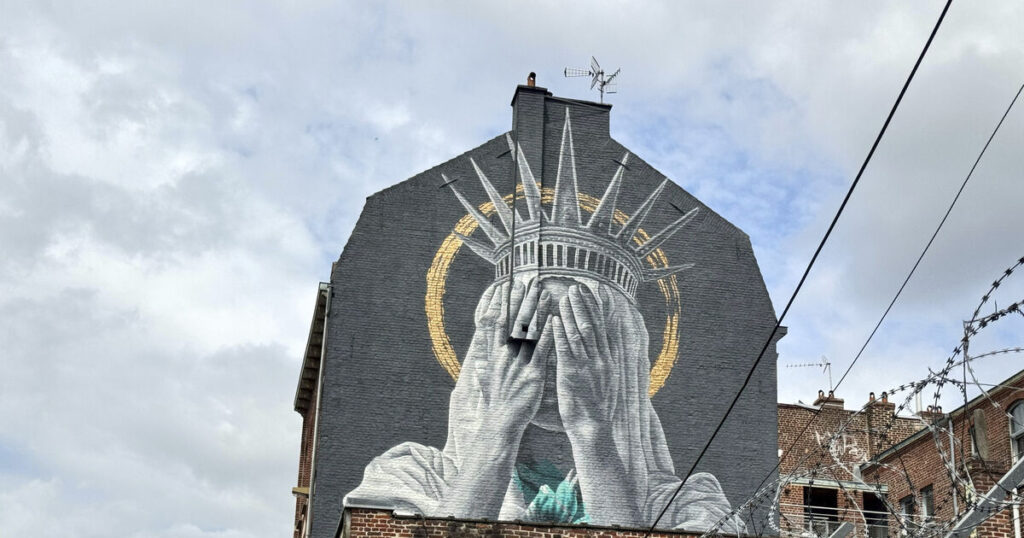A towering mural in France depicting the Statue of Liberty covering her eyes has garnered millions of views online, serving as a critique of former US President Donald Trump’s immigration policies.
Judith de Leeuw, an Amsterdam-based street artist, created the giant artwork in Roubaix, a city in northern France with a significant immigrant population. She described it as “a quiet reminder of what freedom should be”.
De Leeuw stated that “freedom feels out of reach” for migrants and “those pushed to the margins, silenced, or unseen.”
“I painted her covering her eyes because the weight of the world has become too heavy to witness. What was once a shining symbol of liberty now carries the sorrow of lost meaning,” de Leeuw wrote in a July 4 Facebook post, coinciding with American Independence Day.
The artist’s depiction of the Statue of Liberty, a gift from the French to the United States in the late 19th century, has drawn criticism.
Tim Burchett, a Republican politician from Tennessee, expressed his displeasure in a post on X, stating that the artwork “disgusts me.”
He mentioned his uncle, who fought and died in France, a country where US forces participated in both World Wars.
In an interview with The Associated Press, de Leeuw remained firm in her stance.
“I’m not offended to be hated by the Donald Trump movement. I am not sorry. This is the right thing to do,” she said.
The city of Roubaix has defended the mural. Frederic Lefebvre, the deputy mayor in charge of cultural affairs, told broadcaster France 3 that “it’s a very strong and powerful political message”.
During his presidency, Mr. Trump pursued restrictive immigration policies, sparking controversy and legal challenges.
Reports emerged of individuals being deported to countries with which they had no connection, such as South Sudan and Eswatini.
Immigration has consistently been a key issue for Mr. Trump in public opinion polls within the US.
The mural in Roubaix is part of an urban street art festival supported by the city.
Roubaix is one of the poorest towns in France. The city suffered economic decline following the collapse of its once-thriving textile industry, which had historically attracted migrant workers from Europe, North Africa, and other regions.


